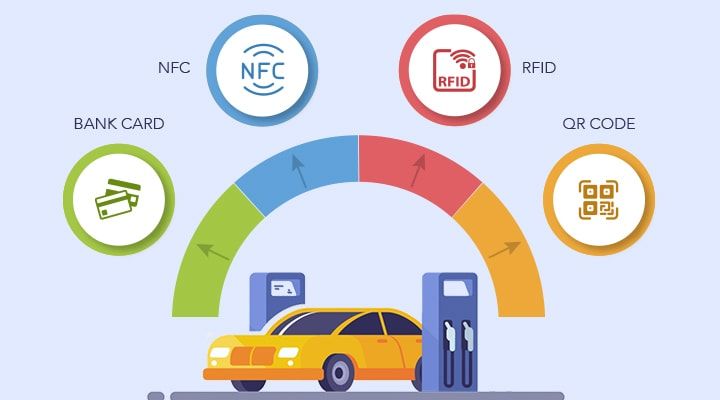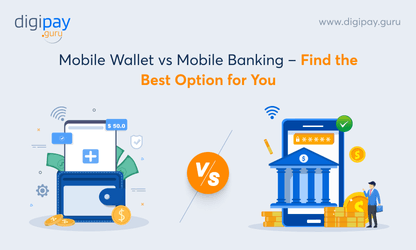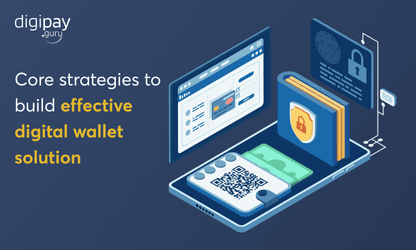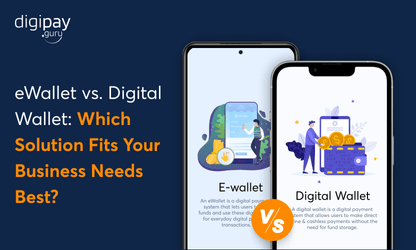Cashless transactions and digital payments have become more prominent than ever. Its top-notch convenience, speed, and various other benefits have attracted many users and merchants across the industry verticals.

Fuel retail is one such industry that has witnessed massive impacts of cashless payments in recent years. In this article, we will discuss about the current scope and future of cashless payments at the fuel stations.
Stats suggest that users are slowly but consistently opting for cashless payment mode at the fuel stations.
About 72% of the people in the UK prefer to make payments via mobile app like Apple Pay or by cards instead of cash.
Similarly, around 63% of people in the UK said that they would prefer pay-at-the-pump option than to making payment to the cashier.
Moreover, 76% of the people would be happy to purchase fuel of a specific brand or from specific stations if they are offered with reward points.
These stats are more than enough to prove that there is a huge mandate among people in favour of cashless payment and it’s only going to increase in the near future with more cutting-edge and secured fuel-payment solutions.
Cashless payments at fuel stations come in different forms. In this article we will discuss them all one by one. The first is the simplest and most commonly used payment method – Card payments.
Over the years card payments have undergone tremendous change. And these changes have also reflected in the cashless fuel stations powered by fuel cards. Let’s have a look at the current trends in fuel cards and payment.
Current Trends in Fuel Cards and Payment
Omni-channel experience
The cards industry is moving forward in the direction of making customer experience seamless with analytics-based personalization. The fuel card players are leveraging this omni-channel approach by letting their customers to locate the nearest fuel station from their mobile app. This omni-channel approach is really crucial for fuel stations as it reduces the cost and customer acquisition time.
Moving towards EMV
With US cards industry adopting MasterCard, Euro pay, and Visa (EMV), most of the major markets have moved to EMV. Migration to EMV has caused many players like the merchants, card-issuing players, and merchant acquirers to invest. The fuel card industry have also started to adopt the EMV card issuance.
These chip-based cards offer the fuel station owners and customers with several benefits. Enhanced security and better control of all the “offline” credit card transaction approvals are two of the many benefits.
Read More: Digital payment trends for 2020.
Loyalty offers
Loyalty programs have always been a key tool for the card companies to efficiently manage increased customer demand as well as in maintaining customer retention whenever there’s a tough competition among various card companies. Many fuel card issuer companies now have a rich loyalty & rewards program to leverage its benefits.
Consumer device cardholder verification method
CDCVM is nothing but an additional security feature which is used to evaluate if the person with the payment instrument is the legitimate owner or not. This is a crucial component as it will play a pivotal role in eliminating the fraud activities by the drivers.
Enhanced security
Biometric authentication along with tokenization will play a critical role in enhancing the security of the fuel payments. With increase in the usage of mobile payments has also lead to the increase in the cases of cyber frauds. This is why many card issuing companies are embracing technologies like tokenization.
Tokenization along with end-to-end encryption can improve the data security of payments by several notches. Fuel cards will continue to adopt tokenization as mobile-based payments are expected to surge in the coming years.
Mobile apps for fuel payments
Recently Shell and ExxonMobil, which are two of the biggest players in the fuel industry, launched their mobile apps that allow customers to pay for their fuel straight from their car. Let’s have a look at how the Shell app works.
Shell app
The Shell app is a mobile application that makes fuel payment fast, convenient, and fun. The application provides users with a plethora of benefits.
With the help of the application, a user can search the nearest Shell filling station and confirm a pump. Once the user confirms the fuel station and the pump, he will receive a three digit code. On reaching the pump, the user just have to enter the code. Once the code is entered, the fuel dispenser will be reset to zero. The user can then fuel his car. Once the fuelling is completed, the amount will be automatically deducted from the Shell app.
Moreover, shell app also provides loyalty offers like rewards, redeemable points, discounts, and many more.
Furthermore, the Shell app also allows the users to buy snacks, beverages, or any other item from the Shell convenience store. The application also has a QR code reader which allows the user to make payments just by scanning the QR code.
Mobile applications powered by RFID technology
RFID is another cutting-edge technology that is being employed by many fuel retailers to simplify the payment process. Let’s see how it works
Registration
In the first step, the user has to download the app for creating a profile. He has to complete the one-time registration process for it.
Get the RFID sticker
In the second step, the user has to get an RFID sticker for his vehicle.
Tag vehicle to the RFID sticker
The third step is to tag the vehicle to the unique code present in the RFID sticker. This can be done by scanning the RFID sticker from the app. After tagging the vehicle, the user can paste the RFID sticker on his vehicle’s windshield.
Add money to wallet
The user has to recharge his wallet by adding some money into it. Only after that, the user can set the quantity of fuel from the app.
RFID sticker scanning
When the user reaches the fuel station, the fuel attendant will scan the RFID sticker with the help of the reading device. The scanning of the RFID sticker will pass the information of the preset fuel quantity from sticker to the nozzle. This preset quantity will also be displayed on the screen of the fuel dispenser.
E-receipt
Once the fuelling is completed, the required amount of money is deducted from the user’s wallet. After the completion of payment, the user receives the e-receipt and cashback (if applicable).
NFC technology in fuel retail payments.
NFC is another contactless technology that is used in the fuel payment system. Many a time, NFC is also referred as the touch and go technology. It’s because all a user has to do is put his NFC card in front of the reader to make payments.
The working of NFC-powered fuel payment solution is almost similar to that of RFID. The only difference is that instead of RFID sticker and reader, NFC cards are used. The rest of the process remains the same.
What can you achieve with cashless fuel payment solution?
Cashless fuel payment solution comes with a plethora of benefits. Let’s see some of them.
Lower operational expenditure
Fuel-retailers are always in search of various options to reduce their operational cost. To achieve lower operational cost with respect to staffing is difficult as the inflation leads to wage increase. Whereas, there’s also a high demand for longer opening hours of fuel stations which compels the fuel station owners to recruit more people.
A mobile wallet solution for fuel retailers can be the perfect solution as it allows the owners to have the luxury of unattended units which won’t require any staff for the payment process. Moreover, it also allows the fuel retailers to keep their service stations operational for 24X7.
Enhance customer experience
Offering seamless customer experience in the fuel industry is not as easy as compared to some other industries. And it is because the fuel industry suffers many limitations of a potentially explosive and environment combined with the historic lack of investment.
The cashless fuel station module does look promising; however, even that has its own share of limitations such as weather conditions and risk of vandalism.
Apart from that, the digital wallet for fuel retailers works pretty fine. It offers top-notch convenience and customer experience as the user can fuel his car without even leaving the car.
Managing rush hours efficiently
Fuel stations generally struggle to offer services during the peak hours. The huge accumulation of vehicles often causes long queues which decreases productivity and increases the waiting time for the users, due to which the customer experience suffers.
With the help of fuel payment solutions, the fuel station owners can efficiently manage the rush hours. It’s because the solution speeds up the payment process thus decreasing the queue as well as the waiting time for the users.
Conclusion
Fuel retail businesses have transformed over the years. Cashless fuel payments are slowly dominating all the fuel stations which once had only cash as a mode of payment. In this article, we saw all the forms of cashless fuel payment. In the coming years, we might see many other technologies incorporating and making fuel payments seamless, fast, and secure.
If you like this article and want to read more such content then keep reading this space.





